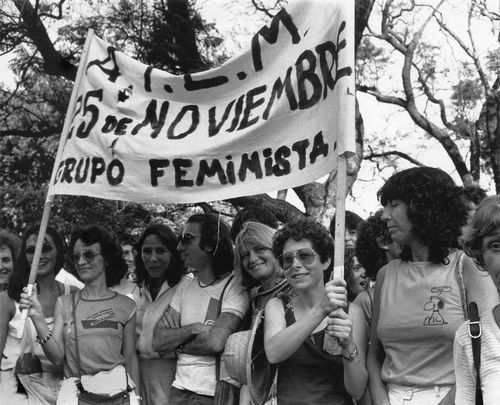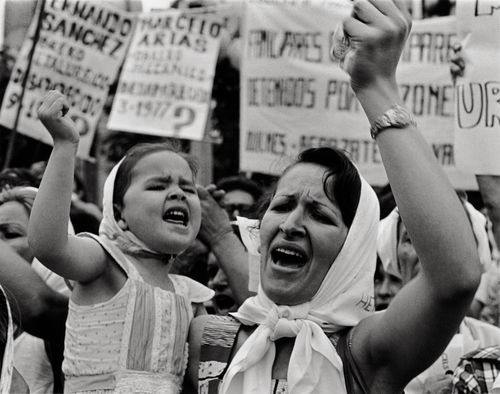Chronology

This timeline of social and political events, installed at the entrance to Radical Women, chronicles the recent history of the fifteen countries represented in the exhibition. Download a high-resolution image of the timeline [JPEG, 11.5MB].
ARGENTINA
Women gain the right to vote
Juan Carlos Onganía overthrows President Arturo Illia to establish the Revolución Argentina, a five-year military dictatorship with three different presidents
Workers and university students throughout the country protest the Onganía regime

Various groups emerge to promote political agendas serving women, including the Movimiento de Liberación de Mujeres, Movimiento de Liberación Feminista, Nueva Mujer, Frente de Lucha por la Mujer, and the Unión Feminista Argentina; the dictatorship forces many of these to dissolve
Juan Perón returns from exile and is elected to a second presidential term with Isabel Martínez de Perón as vice president; after his death she becomes president
Coup d'état against President de Perón: a military junta led by Jorge Rafael Videla takes power, ushering in a dictatorship and the start of a period of state terrorism that results in the kidnapping, torture, and disappearance of as many as 30,000 people
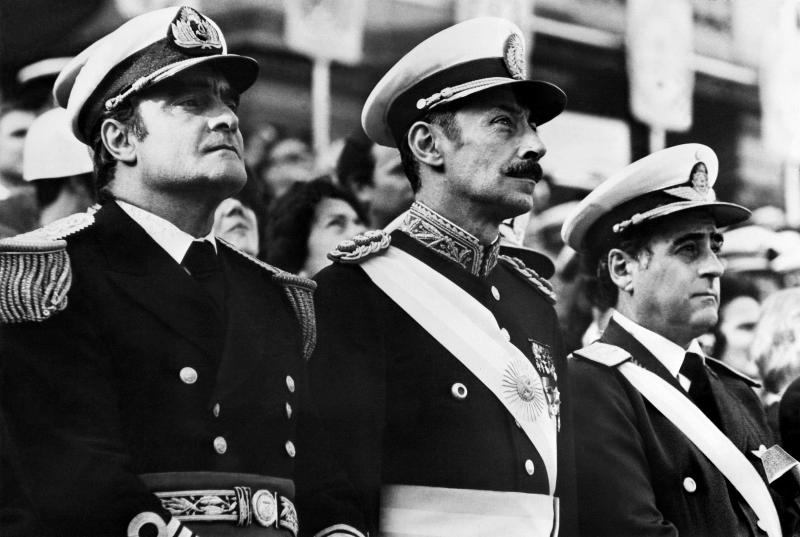
The Madres de la Plaza de Mayo, an organization of mothers of the disappeared, begins holding weekly nonviolent demonstrations in front of the presidential palace
Another wave of pro-women groups emerge to promote a political agenda, including the Centro de Estudios de la Mujer, Asociación de Trabajo y Estudio sobre la Mujer, and Organización Feminista Argentina
War between Argentina and Great Britain over the Falkland Islands (Islas Malvinas)
Raúl Alfonsín becomes president, restoring democracy and marking an end to the dictatorship
The Convention on the Elimination of All Forms of Discrimination against Women is ratified
Various feminist groups and unaffiliated women come together to mark International Day of the Woman
Divorce is legalized
BRAZIL
Women gain the right to vote
President Juscelino Kubitschek inaugurates the newly constructed city of Brasília as the nation's capital
President João Goulart is deposed in a coup, which installs a military regime that remains in power until 1985; during this period more than 400 political murders and disappearances take place as well as torture, detainments, and forced exiles affecting thousands

New constitution is implemented
In response to continued resistance by the opposition and demonstrations like the March of the One Hundred Thousand in Rio de Janeiro, Institutional Act No. 5 is issued. It suspends habeas corpus, shutters the legislature, and increases surveillance and censorship; this act is revoked in 1979
Representatives of foreign nations are kidnapped throughout the country
As a young Marxist, Dilma Rousseff (president 2011–16) is jailed and tortured
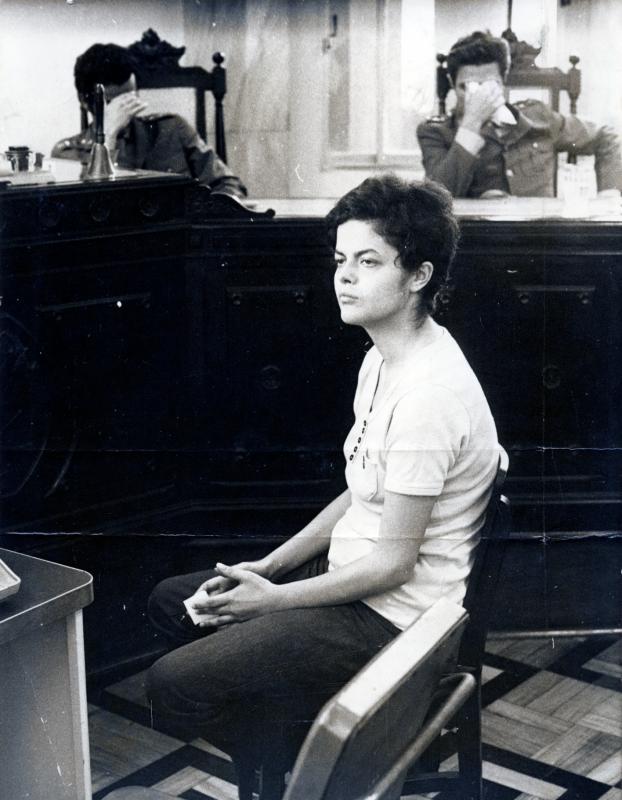
Brazil's second wave of feminism is born: in Rio de Janeiro the Centro da Mulher Brasileira is founded, and the United Nations Information Centre (UNIC) sponsors a gathering at the Brazilian press association that examines the role of women in Brazilian society; in São Paulo the Encontro para o Diagnóstico da Mulher Paulista, a conference sponsored by UNIC, gives rise to the Centro de Desenvolvimento da Mulher Brasileira
The periodical Brasil Mulher emerges in Londrina (Paraná) and allies itself with the opposition to the military regime
The feminist periodical Nós mulheres begins publication in São Paulo
Divorce is legalized
First Encontro Nacional Feminista held in Fortaleza (Ceará)
An amnesty law allows opponents of the military regime to return from exile but also shields human rights violators from prosecution
A debt crisis throughout Latin America ends Brazil's access to foreign financial markets
Vice president–elect José Sarney assumes the presidency following the death of president-elect Tancredo Neves, ending the military dictatorship and restoring democracy
Sarney establishes the National Council on Women's Rights
The Tercer Encuentro Feminista Latinoamericano y del Caribe takes place in Bertioga (São Paulo); a central topic is the tie between feminism and anti-imperialism in Latin America
CHILE
Women gain the right to vote
Birth control becomes widely available
Law 16.880 establishes centers for mothers, which aim to give women a greater role in society; by 1973 600 centers are serving 20,000 women
Salvador Allende is the first democratically elected Marxist president; he establishes the office of Secretaría de la Mujer in 1971 to address socioeconomic issues affecting women
Coup d'état overthrows Allende and ushers in the dictatorship of Augusto Pinochet, which lasts until 1990; an estimated 3,000 people are executed or disappeared, with thousands of others tortured or held as political prisoners

Isis International, an organization dedicated to feminist advocacy and research and analysis on women's issues, opens an office in Santiago to serve Latin America
Marta Lidia Ugarte Román, a professor associated with the Communist Party and secretary of education under Salvador Allende, dies in September after being brutally raped and tortured by the military, becoming the first confirmed victim of the dictatorship
Various national women's conferences take place in Santiago: Encuentro Nacional de la Mujer, led by the Departamento Femenino de la Coordinadora Nacional Sindical, and Encuentro de Mujeres, organized by the Círculo de Estudios de la Mujer
Julieta Kirkwood publishes Ser política en Chile: Las feministas y los partidos (To be political in Chile: The feminists and the parties), establishing herself as one of the primary theorists within the Chilean feminist movement
The feminist movement, composed of women who had been meeting since 1977, becomes formalized. An open letter to women across political and social strata is composed in an effort to organize opposition to the military regime
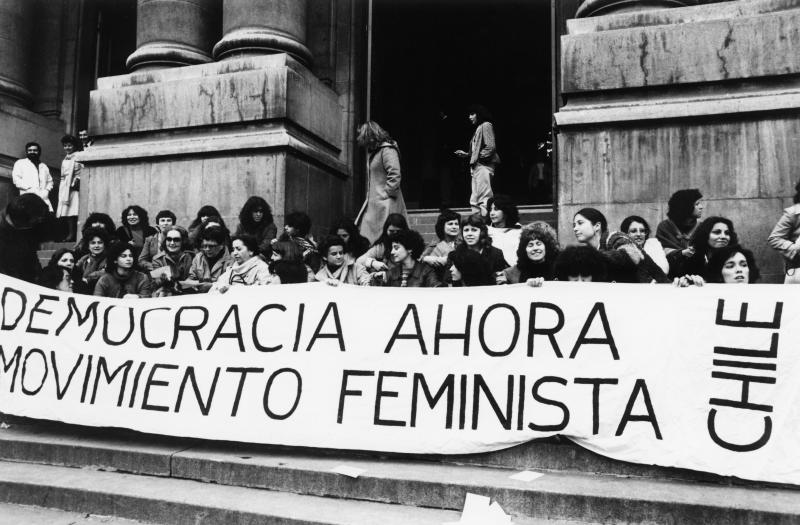
Various marches take place in Santiago, notably one led by the feminist movement as part of the "No me olvides" campaign
COLOMBIA
Women gain the right to vote
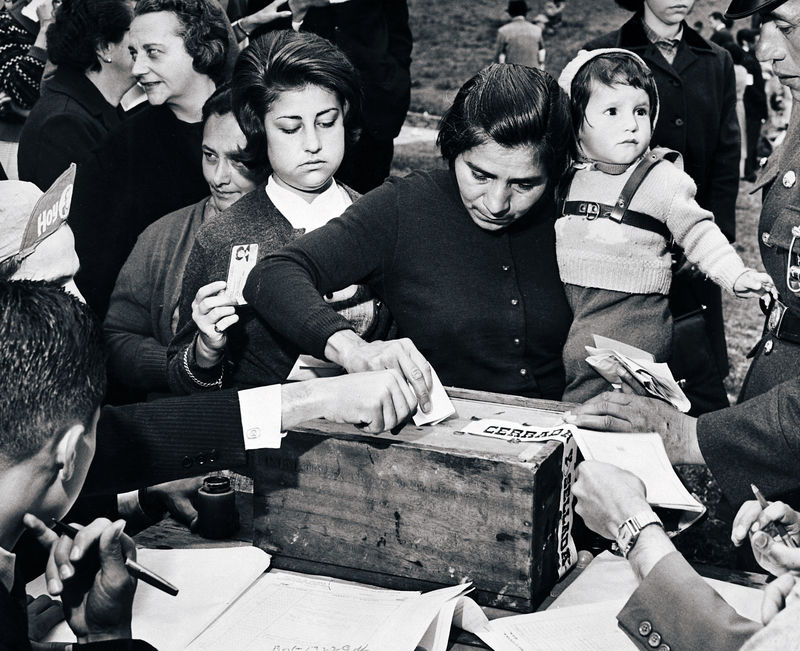
The Frente Nacional is formed when the two major political parties agree to share power, banning other political parties
The Ejército de Liberación Nacional (ELN), a left-wing group, is founded, as is the Fuerzas Armadas Revolucionarias de Colombia (FARC), the country's largest rebel group. The conflict between the ELN and FARC—which resulted in an estimated 220,000 dead, 25,000 disappeared, and nearly six million citizens displaced—ends with a peace agreement in 2016, after more than five decades of violence
Women are granted the same legal rights as men
Activities centered on women as workers take place, including the Primer Encuentro Continental de la Mujer en el Trabajo in Medellín and the Congreso Panamericano de Mujeres Sindicalistas in Bogotá
In a historic meeting, women's groups throughout the region convene for the Primer Encuentro Feminista Latinoamericano y del Caribe in Bogotá
President Belisario Betancur is elected and grants amnesty to guerrillas and frees political prisoners
La Casa de la Mujer, a women's group dedicated to reporting crimes against humanity, is founded
The Palace of Justice in Bogotá is taken over by members of M-19, a leftist group, sparking a bloody siege with dozens of civilian casualties
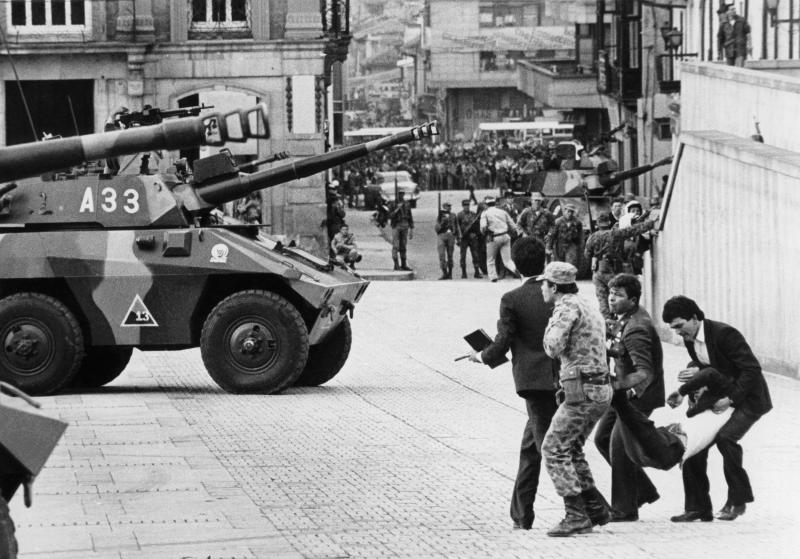
The Fundación Mujer y Futuro is established in Bucaramanga
Within the human sciences department of the Universidad Nacional, the Grupo Mujer y Sociedad is founded to consider the question of what it means to be a woman
COSTA RICA
Women gain the right to vote
Conservative administrations govern the country
Daniel Oduber Quirós becomes president, promoting a socialist agenda
The Movimiento Liberación de la Mujer is born, addressing issues of reproductive rights, legalization of abortion, and the right of women to make decisions about their bodies and lives
Rodrigo Carazo Odio becomes president, promoting a conservative agenda
Various groups emerge to advocate political agendas serving women, including Colectivo Ventana, Centro Feminista de Información y Acción, Colectivo de Mujeres Pancha Carrasco, and Colectiva Lésbica Feminista "Las Entendidas"
Luis Alberto Monge, from the leftist Partido Liberación Nacional, becomes president as the Sandinistas in neighboring Nicaragua gain traction
CUBA
Women gain the right to vote
Revolutionaries oust President Fulgencio Batista, and their leader, Fidel Castro, assumes power
Vilma Espín establishes the Federación de Mujeres Cubanas to defend women's rights and end discrimination; among the group's first tasks is assisting nearly 100,000 women involved in prostitution
The Ana Betancourt schools are established to educate women from rural areas and to give them the tools to realize the changes prompted by the revolution
During the "year of education," women teachers lead literacy campaigns
The Cuban Missile Crisis—a nuclear standoff between the United States, the Soviet Union, and its ally Cuba—takes place
Abortion policies are liberalized, giving women access to free and safe procedures
The Familial Code (Law 1289) is approved, which upholds equal rights for the sexes in work-related opportunities
A constitution is passed through a popular vote; it contains many pro-women provisions
Policies are passed to extend social benefits and protect the rights of female workers
The Mariel Boatlift, an exodus of an estimated 125,000 Cubans, arrives in Miami
Voluntary military service for women is introduced
A new labor regulation ensures protections for female workers, including fair working conditions and maternity benefits
GUATEMALA
Under the presidency of Miguel Ydígoras Fuentes, conflict between left-wing guerrillas and government military forces leads to a civil war, which ends in 1996
Founding of the Movimiento Revolucionario 13 de Noviembre
Enrique Peralta Azurdia becomes president after a coup against Ydígoras Fuentes
Women gain the right to vote
Julio César Méndez Montenegro becomes president, and civilian rule returns
Carlos Manuel Arana Osorio becomes president, placing the country in a state of siege and paving the way for a decade of military-dominated governments
An estimated 200,000 people—a majority of them indigenous people—are killed or disappeared, many of them women, while hundreds of thousands are displaced within and outside the country
Ana María Rodas publishes Poemas de la izquierda erótica (Poems of the erotic left)

The feminist poet Alaíde Foppa, who had been living in exile in Mexico and had been vocal in her opposition to the regime, returns to Guatemala City and is kidnapped and presumably murdered by the military
Coup d'état allows Efraín Ríos Montt to seize power, initiating one of the most violent periods of the civil war, when the worst of the genocide takes place
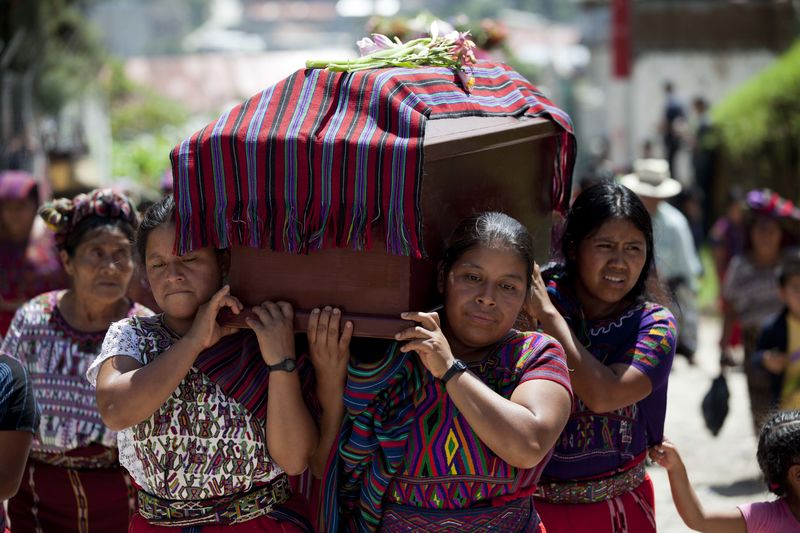
Coup d'état led by Óscar Humberto Mejía Victores deposes Ríos Montt; during his tenure Mejía Victores declares amnesty for those accused of political crimes committed between 1982 and 1985
Grupo de Apoyo Mutuo is established by the widows and mothers of assassinated and disappeared students from the University of San Carlos
Marco Vinicio Cerezo, the first civilian president in 16 years, is elected
MEXICO
Women gain the right to vote
The government battles dissidents (guerrillas, students, and activists) in a "dirty war" that lasts until 1982; there are more than 1,200 disappeared as well as hundreds of cases of torture at military installations
In Mexico City the Olympic Games coincide with student protests against the government of Gustavo Díaz Ordaz; security forces fire on protesters in the Plaza de las Tres Culturas in Tlatelolco, resulting in hundreds of casualties
One hundred women gather in Mexico City to discuss birth control and abortion legislation, in the first feminist gathering of its kind
The World Conference of the International Woman's Year, organized by the United Nations, takes place in Mexico City

The Jornada Nacional por el Aborto Libre y Gratuito, a day of advocacy for legal and free abortion, takes place annually

The Coalición de Mujeres Feministas carries out protests in Mexico City on various women's issues
A march commemorating women who have died in clandestine abortions takes place annually
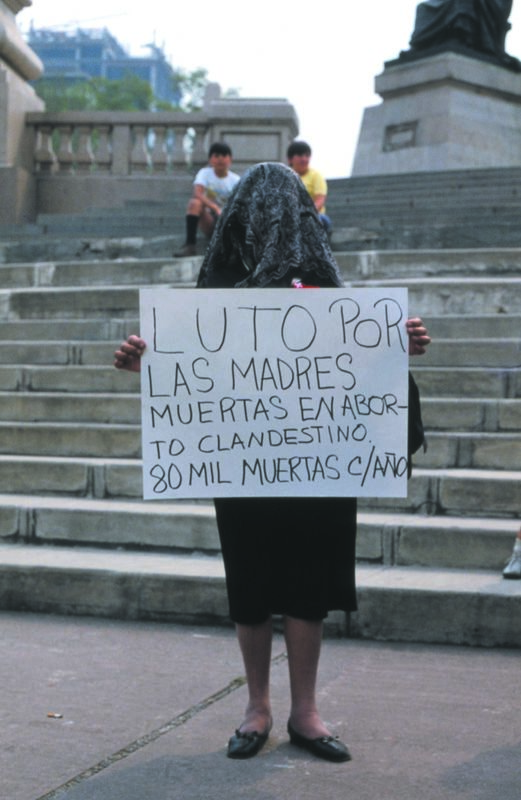
The Frente Nacional por la Liberación y los Derechos de la Mujer, which rallies women's groups and leftist organizations around feminist issues, is founded
The Centro de Apoyo a Mujeres Violadas, Asociación Civil is founded in Mexico City to address the widespread incidence of rape
Economic crisis grips the country
An estimated 30,000 people are killed in an earthquake in Mexico City
PANAMA
Women gain the right to vote
Elida Campodónico de Crespo, ambassador to Mexico, becomes the first female ambassador in Latin America
Riots break out as Panamanians clash with Americans living in the Canal Zone over the raising of Panama's national flag, resulting in at least 20 deaths and hundreds of injuries; January 9 becomes a national holiday called Martyrs' Day
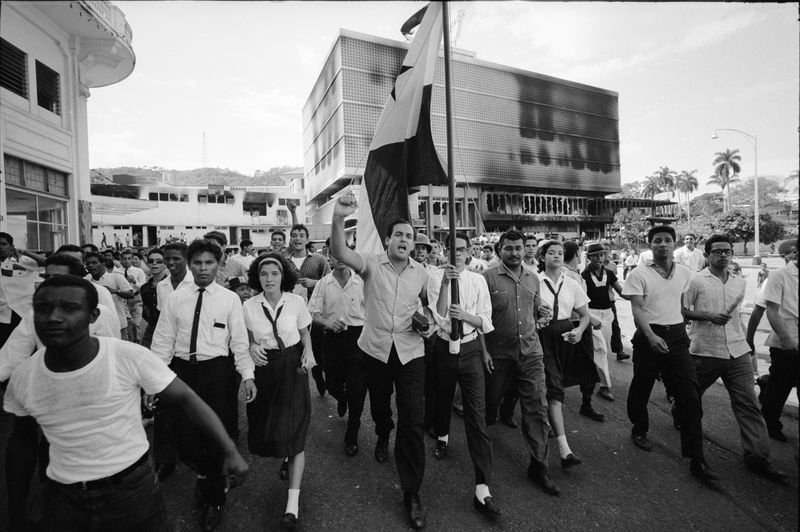
University professor and education reformer Otilia Arosemena de Tejeira is named "Woman of the Americas" by the Organization of American States
Arnulfo Arias Madrid is elected president but is soon overthrown by the national guard, led by Omar Torrijos, who takes power and establishes a military regime that lasts until 1981; hundreds are tortured, detained, and murdered
The Torrijos-Carter Treaties are signed, transferring the canal from the United States to Panama
Teachers gather to request higher salaries and improvements in the educational system; female nurses—as well as students, businessmen, and others—join in what would be Panama's largest march
Manuel Noriega becomes head of the Guardia Nacional, effectively becoming dictator of the country
PARAGUAY
The Liga Pro Derechos de la Mujer is founded, advocating women's rights
Civil rights are extended mainly to unmarried, divorced, or widowed women, thereby excluding married women
Alfredo Stroessner leads a coup d'état that overthrows President Federico Chávez; through a special election Stroessner becomes president, ushering in a dictatorship that lasts until 1989, when a military coup topples his government; during this period citizens live under a constant state of siege while government security forces, as part of the US-backed Operation Condor, are responsible for 3,000 to 4,000 murders, hundreds of disappearances, and thousands of cases of torture
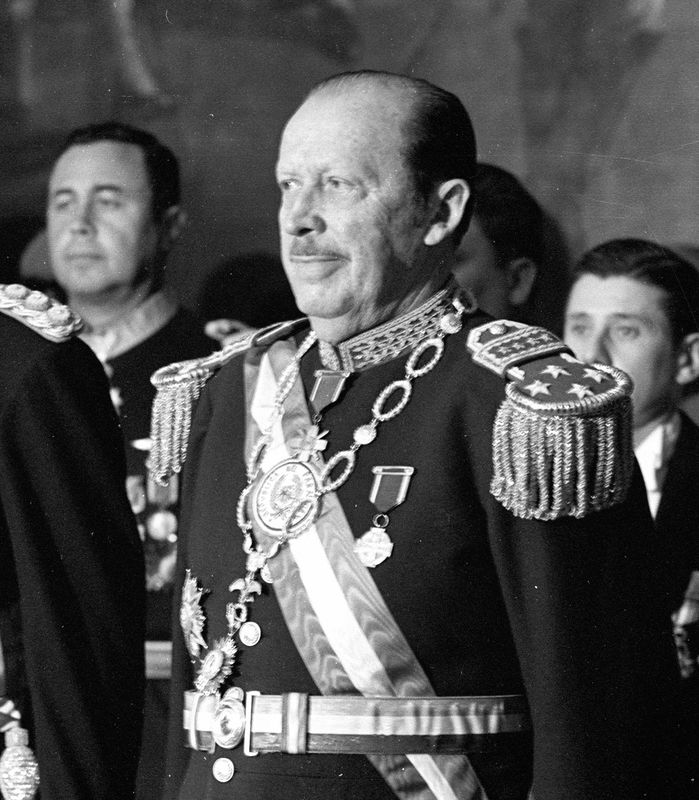
Women gain the right to vote
The Centro Paraguayo de Estudios de la Mujer is established
The new civil code, which includes discriminatory measures against women, becomes law; the Coordinadora de Mujeres del Paraguay—later known as Coordinación—is formed in response
The Primer Encuentro Nacional de Mujeres takes place; a central goal is achieving equality before the law
PERU
Women gain the right to vote
Coup d'état overthrows President Manuel Prado Ugarteche; a military junta leads the transitional government until elections in 1963, when Fernando Belaúnde Terry becomes president, marking a return to civilian rule

Belaúnde Terry is overthrown in a coup d'état led by Juan Velasco Alvarado, ushering in a military dictatorship and an agrarian reform law in 1969

Abimael Guzmán forms Maoist revolutionary group the Shining Path, whose armed conflict with the government, which began in 1980, claimed some 70,000 lives
Velasco Alvarado is ousted in a bloodless coup d'état led by Francisco Morales Bermúdez, who assumes the presidency, ushering in the second phase of the military dictatorship
Manuela Ramos, a group that seeks gender equality, is founded
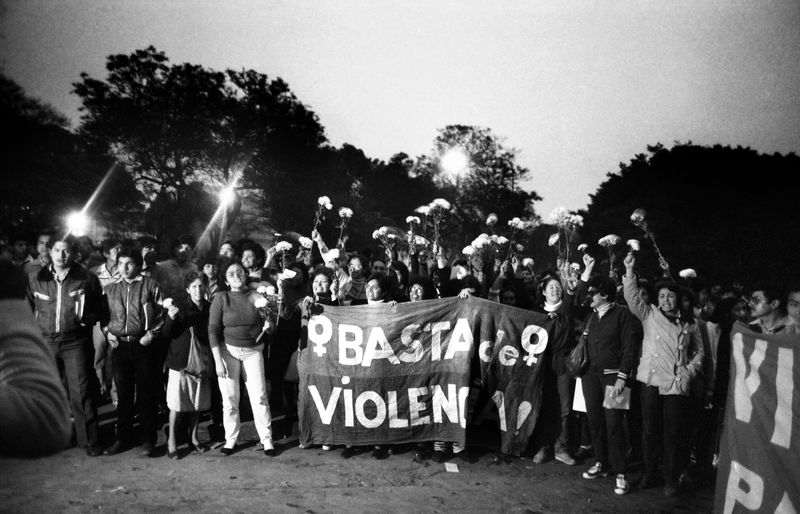
The Centro de la Mujer Peruana Flora Tristán is established; its mission is to obtain full rights of citizenship for women
Belaúnde Terry returns as president, signaling another return to civilian rule
July 22 is recognized as International Day of Domestic Work during the Segundo Encuentro Feminista Latinoamericano y del Caribe, which takes place in Lima
Feminists protest at the headquarters of the Jurado Nacional de Elecciones, demanding that women be allowed to register to vote without disclosing their marital status. The Grupo de Autoconciencia de Lesbianas Feministas is founded
Alan García becomes president as terrorism grows
PUERTO RICO
Women gain the right to vote
Law 116 makes sterilization free and legal and offers no alternative forms of contraception; by 1960, when the law is repealed, more than one-third of Puerto Rican women had been sterilized in a program supported and endorsed by the US government
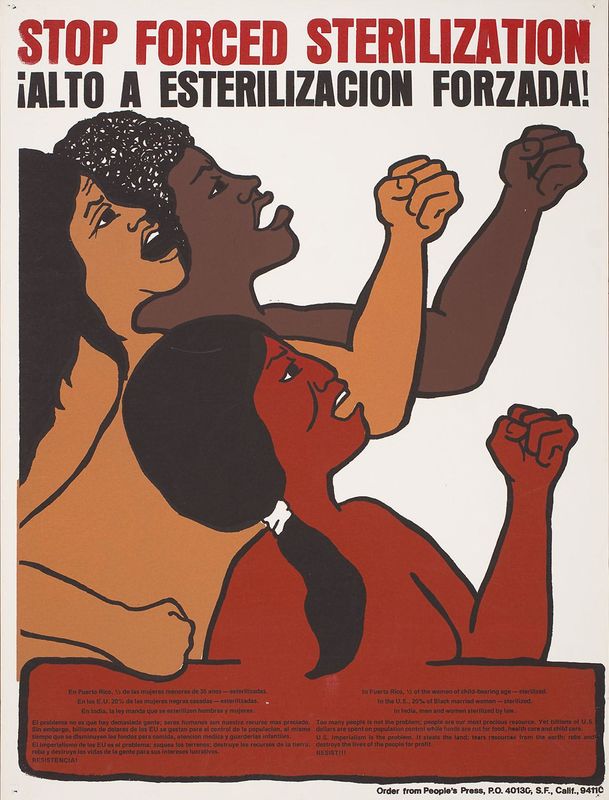
Felisa Rincón de Gautier presides as mayor of San Juan, the first woman in the region to be elected mayor of a capital city

A majority of Puerto Ricans vote to maintain political status as a US commonwealth
Organizations such as Mujer Intégrate Ahora and the Federación de Mujeres Puertorriqueñas are founded to promote women's rights
La mujer en la lucha hoy (The woman in today's struggle)—a landmark anthology of works on Puerto Rican feminism—is published
New civil code grants women equal economic and legal rights
La operación, a documentary on female sterilization directed by Ana María García, is released
UNITED STATES
Women gain the right to vote
The Chicano movement is active throughout the country
Betty Friedan publishes The Feminine Mystique
The Civil Rights Act passes, prohibiting discrimination based on race, color, religion, sex, or national origin
Vietnam War: the first American troops arrive in South Vietnam; direct US military involvement ends in 1973
The Voting Rights Act passes
The National Organization for Women is established
Feminists are active in marches throughout the country, including protests against the 1968 Miss America pageant, the Women's Strike for Equality in 1970, and rallies to "Take Back the Night"
1,500 Chicanos gather at the National Chicano Youth Liberation Conference in Denver, where workshops address the role of women in the movement, fomenting the Chicana feminist movement
The Comisión Femenil Mexicana Nacional, a group promoting issues facing Latinas, is established during the National Chicano Issues Conference
The Supreme Court's decision in Roe v. Wade legalizes abortion

The Women's Alliance is formed, composed of women from Black Power groups as well as women from the Puerto Rican nationalist group the Young Lords
President Richard Nixon resigns over the Watergate scandal
A lawsuit is filed on behalf of Latina women who were victims of nonconsensual sterilization, leading to a moratorium on such practices and the adoption of bilingual consent forms
The Chicana Forum is founded with a mission to raise the profile of Chicanas in the economy and business community
Sandra Day O'Connor becomes the first woman Supreme Court justice
URUGUAY
Women gain the right to vote
National state of emergency declared by President Jorge Pacheco following student riots and unrest among laborers
President Juan María Bordaberry oversees a self-coup, ushering in a dictatorship that lasts until 1985 and is led mainly by the military; during this period there are an estimated 15,000 political prisoners and 300 disappeared
Divorce is legalized
Several women's groups emerge: the Federación Uruguaya de Amas de Casa, Comisión de Mujeres Uruguayas, Unión de Mujeres Uruguayas por el Pan, la Democracia y la Paz, Asociación de Mujeres Lourdes Pintos, and Grupo de Mujeres Ecuménicas
Various groups consolidate into Madres y Familiares de Uruguayos Detenidos Desaparecidos to protest the detainment and disappearance of family members
A series of national one-day strikes highlight the regime's weaknesses and unpopularity
La Cacerola—a publication that played a major role in the political awakening of feminists—is established
Julio Maria Sanguinetti is the first democratically elected president in 13 years, bringing an end to the dictatorship. The Primer Encuentro de Mujeres del Interior takes place in Melo
VENEZUELA
Women gain the right to vote
A decadelong military dictatorship ends in a coup d'état, and leftist Rómulo Betancourt is elected president
Leftist insurgents threaten the nation's democratic system, initiated in 1958 under presidents Betancourt and Raúl Leoni; a failed attempt to assassinate Betancourt takes place in 1960
Discrimination based on race, gender, and social condition is prohibited
The Primer Seminario para la Evaluación de la Condición de la Mujer en Venezuela brings together women from various political parties and national women's organizations
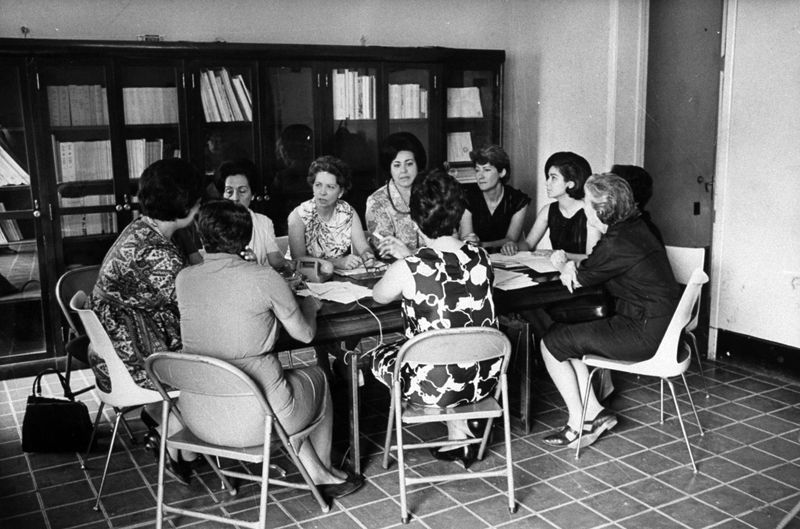
The Movimiento de la Liberación de la Mujer is founded in Caracas
The Congreso Venezolano de Mujeres takes place in Caracas, led by Elena Fierro, who would become the first female president of the Tribunal Supremo de Justicia
La Conjura—a group dedicated to disseminating feminism through various media, artistic, and intellectual channels—is founded in Caracas
The feminist group Persona declares its independence from political parties and men; the Grupo Feminista Miércoles, a women's filmmaking collective, produces documentary films in the 1970s and early 1980s
Irene Sáez of Venezuela wins the Miss Universe title; she goes on to hold various public offices and in 1998 runs unsuccessfully for the presidency
On December 17 Hugo Chávez and other junior military officers form a secret group, the Bolivarian Revolutionary Movement 200 (MBR-200), vowing to change their society; they would stage their first coup attempt in 1992
The Venezuelan Medical Federation introduces a law in Congress to decriminalize abortion; the proposal is rejected by a majority of congressmen
The Casa de la Mujer is founded in Maracaibo to offer free health care. The Asociación Venezolana para una Educación Sexual Alternativa is established to promote reproductive health



